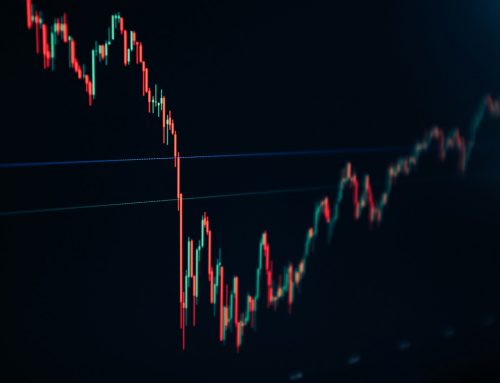By Steve Chappell, Global Head of Trading Systems Development for VectorVest, Inc.
It has always been ironic to me that seemingly everyone on Wall Street says, “You can’t time the market,” and then proceeds to make predictions about its future. Somewhere along the way, market timing became a myth, or worse, a total investing taboo.
So, you’d be forgiven for believing that the stock market moves in a random, totally unpredictable fashion, but it does not. While there are periods where the market moves up and down from week to week, it always happens within the framework of an underlying trend. This article is not about predicting the market at all. It’s about timing it. It’s about reading our indicators and letting them tell us when the market is rising, falling, or encountering a major change in direction. It’s about sensing turning points and knowing when to invest aggressively and when to take more defensive-minded actions.
The place to start our journey together is by making a distinction between market forecasting and market timing. Forecasters consider economic factors and whatever else they think is important to ‘predict’ timely market outcomes. Market timers, on the other hand, use indicators to ‘monitor’ short or longer-period market trends to be alerted to changes in market direction.
The truth is that the most effective market timers often take a 2-prong approach to best solve this riddle. First, like the forecasters, they monitor the big picture, which I would define as the interplay between earnings, inflation, and interest rates. Just a basic understanding that stock markets rise when forecasted S&P 500 earnings are trending up will go a long way in helping you make better stock market decisions. Bull markets thrive when earnings are rising during periods of relatively low inflation and interest. There is a bit more to this story, but let’s take the ball and run with what we have discovered here so far.
The gist is to buy safe, undervalued stocks rising in price in rising markets and earnings are the key puzzle piece to all those things.
Second, we need to use the proper tools to assess market direction, but not receive a signal so fast that we take on too much risk. We start our analysis by monitoring the week-over-week movement of the stock market. The first week in which the price begins to change direction provides a general alert that the market may be changing course. When the market moves in the same direction for two consecutive weeks, we say that you have received the preliminary signal of a sustainable trend in that direction. A ‘Confirmed Up’ market signal is achieved only when market breadth is such that more stocks in our database have earned the merits of a ‘Buy’ recommendation than a ‘Sell’ recommendation. Stocks need to have some inherent value and must also be rising in price to achieve a ‘Buy’ recommendation in our system. The reverse market price and breadth rules would be true for ‘Confirmed Down’ periods.
So how well does this all work together? At VectorVest, we have been timing the market for more than 20 years and have yet to miss a major market move. Here are just a few instances around major market events that you might remember:
November 2nd, 2007, we said: “The Confirmed Down signal that we received yesterday could be the entrée to a long Bear market. We aren’t there yet because earnings are still rising according to our method of analysis. Yet, we no longer appear to have the support of an accommodative Fed and that can make things very bad for the stock market. So don’t be deceived by the endless parade of experts who will appear on TV and other places telling you to buy stocks. This is not the time to buy stocks.”
On March 6th, 2009, we said: “The market is itching to rally…” which of course preceded one of the longest bull runs in stock market history.
On January 10th, 2020, we said: “We got an early sign that there was trouble ahead when we saw that the Price of the VectorVest Composite (VVC) moved to a new all-time high, while the Buy/Sell Ratio, BSR, was hitting lower highs. We said, “In fact, as the Price of the VVC continues to hit higher highs, the Buy/Sell Ratio, BSR, has been hitting lower highs. This divergence is called the Canary’s Warning. Though the market has been relatively positive this week, the Canary is warning us to protect our profits.”
This is just a small sampling of a much longer list of verifiable evidence that market trends and market turning points can be made visible if you have the right tools, training, and education to get the job done the right way. Can you time the market successfully? The answer my friends, is yes, you can.
Article featured on tradingherald.com:
Want These Types of Insights at Your Fingertips so You Can Win More Trades?
Use VectorVest to analyze any stock free. VectorVest is the only stock analysis tool and portfolio management system that analyzes, ranks and graphs over 18,000 stocks each day for value, safety, and timing and gives a clear buy, sell or hold rating on every stock, every day.
Before you invest, check VectorVest! Click here to ANALYZE ANY STOCK FREE and see our system in action!










Leave A Comment